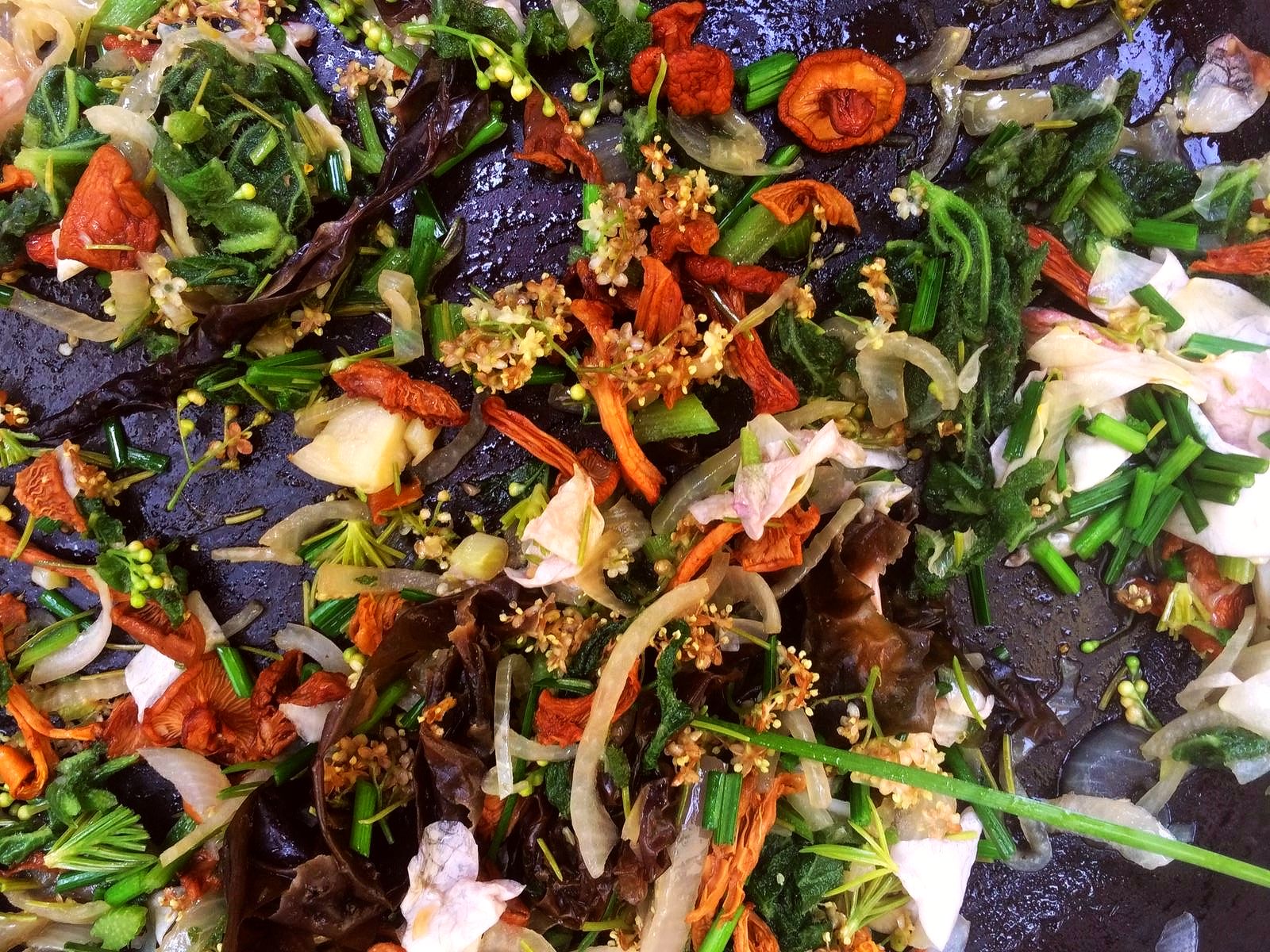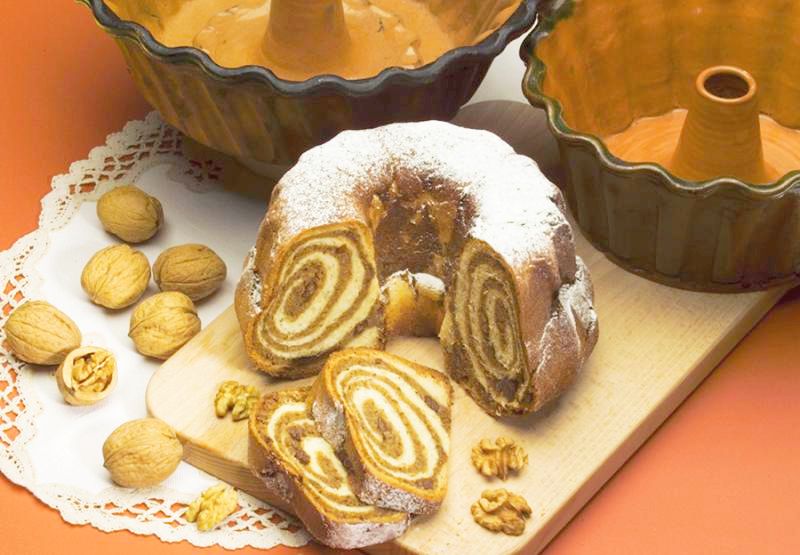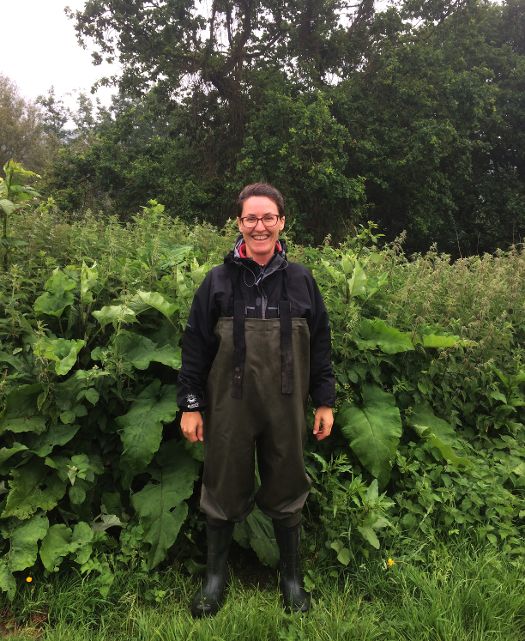Before coming to work with Forager I only observed English nature from the airplane, and in that way, it seemed sterile...
It turned out I was wrong. England is a lot like Slovenia. The flora is diverse and even where there is comprehensive farmland there are various habitats offering many tasty wild plants.
The plants I most enjoyed in the English flora were the halophytes, those which are able to grow in the salty soil due to their interesting mechanisms to avoid water outflow. Halophytes are very spread out in England in comparison to Slovenia, where there are only 12 halophyte species growing altogether in the 43 km (27 mi) coastal line stretching from Italy to Croatia. I suppose living in the costal area can be really fun and preparing wild meals from halophytes a good way to satisfy all the senses.
Slovenia – hot spot of Europe
Now, let me tell you about Slovenia. The number of plant (also animal) species in Slovenia is remarkably high per unit area. The diverse habitats are the basis for this high number of plant and animal species per unit area. Slovenia is therefore called the hot spot of Europe.
The diverse regions bringing together this high number of species are the Alps with Gorenjska region, Mediterranean Sea with Primorska region, Karst area, with caves enduring the famous Human fish creature, rather extensive old-growth forest of Dinaric Alps and Kocevje region, and up northeast to the beginning of the great Pannonian plain. See more of Slovenia here.
It's no wonder that there is a village in Prekmurje, where there are more British citizens than Slovenian.
The tradition of foraging is rather strong
A chef in Luda restaurant, also the first restaurant to be supplied by us, lately refered that Slovenians are gatherers by their character. Indeed, the older generation forage a lot on their own. Herbs for tea, mushrooms, ramsons, stinging nettles and dandelion are the most common pickups. These are useful ingredients for teas, jams, the alcoholic drink called “snops” and others.
Here is a recipe for the traditional herbal tea from Slovenia. The main ingredients are:
- linden flowers
- elderflower and elderberry
- wild thymes
- mint leaves
The auxiliary ingredient to add to the mixture in minor part are chamomile, oregano, sage and melissa. All the ingredients are used dried. This mixture in many varieties is used in winter in order to resist cold and cough.
Commercial foraging on the other hand is not so popular. In fact, Rozma is the first and the only official foraging supplier of wild greens in the country. Rozma is our brand name for wild plant products, which includes delivery to the chefs and individuals, as well as a workshop organization. Rozma in Slovenian is short for rosemary. Rosemary actually grows wild in the coast region of Slovenia.
The country with no Michelin stars
There are all sorts of lists ranking restaurants, but the Michelin stars haven’t touched Slovenia by now. The list of S. Pellegrino top 100 restaurants has in 2010 listed JB restaurant and set an important milestone. Later, in 2017, a self-taught cook Mrs. Ana Ros made it again. After starring in the Netflix hit show Chef’s Table, she became a winner of the prestigious Best Woman Chef Award with enormous media attention at home and abroad. Ana’s Hisa Franko also listed in the top 50 the last two years, bringing interest not only to one restaurant, but to the whole country as an important culinary destination.
haven’t touched Slovenia by now. The list of S. Pellegrino top 100 restaurants has in 2010 listed JB restaurant and set an important milestone. Later, in 2017, a self-taught cook Mrs. Ana Ros made it again. After starring in the Netflix hit show Chef’s Table, she became a winner of the prestigious Best Woman Chef Award with enormous media attention at home and abroad. Ana’s Hisa Franko also listed in the top 50 the last two years, bringing interest not only to one restaurant, but to the whole country as an important culinary destination.
While the top kitchens have received so much attention, the traditional kitchen was neglected. There are a lot of tasty and special local dishes. To name a few of my favourite, potica with walnut or cottage cheese filling, Prekmurska gibanica – dessert from Prekmurje, Idrija žlikrofi - dumplings, Belokranjska pogaca – salted cake, Bograc goulash, mlinci…
Traditional Slovenian breakfast is in comparison to English breakfast quite light. It's bread with butter and honey, a glass of milk or soured milk, and an apple.
I am a Wild Box fan too
Foraging in England was rewarding due to the collaboration with the Forager team. They have established a connection with nature, and they find it unforgivable not to share it. Not only to professional chefs, but also individuals. Their last project – Wild Box - and its recipes, is going to be the first experience of wild food to many individuals, and certainly, it will be tasty and special.
As it goes for all us foragers around the world, we need to share our knowledge to local community. The treasure we find in the surrounding plants - excess nutrients, flavour and medicinal value - is truly rich, yet scarcely acknowledged as significant to the broader public. I think people find it difficult to believe that something so tasty and healthy can be within reach of everybody’s hand.
I wish Miles and all his team of foragers much delight in creating the Wild Box, and subscribers the reward it brings in the form of unforgettable gourmet experience.

